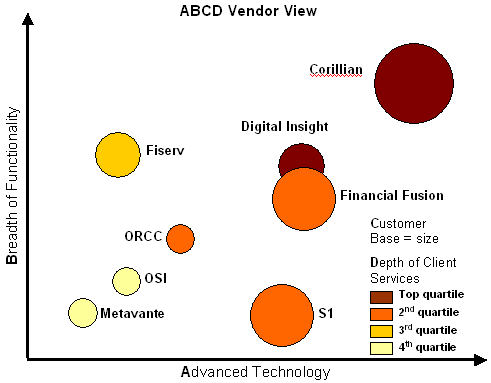Branch Image Capture Vendors: Adoption Takes Hold
Abstract
Branch Image Capture Vendors: Adoption Takes Hold
Community banks and credit unions are adopting branch image capture technology in record numbers. Large banks continue to debate the idea and have been slow to adopt the technology.
After years of languishing, branch item capture (BIC) adoption has finally taken hold. Bolstered by the rapid ascent of image exchange activity, smaller institutions in particular have adopted BIC solutions in record numbers. So much so, that 2006 will see several hundred more institutions adopting branch image capture solutions. In total, at least 900 institutions have implemented (or are implementing) representing a collective 75,000 distributed capture points, many of those at the teller counter. There's already a significant backlog among vendors - collectively representing over 82,000 seats. The days of slow, cautious experimentation with branch capture are long gone.
In the report, , Celent compares the range of solutions available to banks looking to implement branch capture. This report examines the offerings of eight vendors: Alogent Corporation, Carreker Corporation, Metavante Image Solutions, NCR, Open Solutions, ProfitStars, VSoft Corporation and WAUSAU. The report uses a framework for evaluating vendors called the Celent ABCD Vendor View, which shows at a glance the relative position of each vendor in four categories: Advanced technology, Breadth of functionality, Customer base (number of end-users), and Depth of client services.
No single vendor captured highest marks across all four categories. However, in the Advanced technology and Breadth of features categories, VSoft stands out as the overall performance leader - a position solidified by a number of recent customer wins. Among vendors, there is diversity along the Advanced technology axes reflecting their widely varying progress in migrating from com-based client/server to Web services architectures. On the Breadth of functionality axes, vendors are more closely grouped. Led by Metavante, there are relatively few features separating the group. Metavante and Alogent are clear customer base leaders - Metavante with more customers (350+ versus Alogent痴 250), and Alogent with more seats sold (41,000 versus Metavante痴 28,000). Alogent is also the leader in depth of services, sporting multiple certified teller system integrations and deep experience integrating with legacy payment systems.

The report also includes a primer on BIC and a discussion of future trends and debates which may impact future adoption of the technology. "Teller capture remains hotly debated particularly among large banks. It represents a 'clash of two worlds,' causing banks to forge alignment among historically disparate interests between check operations and the retail bank," says Bob Meara, author of the report and senior analyst in the Banking group at Celent.
This report follows a companion analysis of remote deposit capture (RDC) vendors, Remote Deposit Capture Vendors: Crossing the Chasm. Together, these reports spotlight a decisive trend sweeping the industry: distributed image capture. Increasingly seen as inevitable, institutions large and small are embracing distributed capture as both an operational and competitive necessity.
The 80-page report contains 29 figures and 35 tables. A table of contents is available online.

